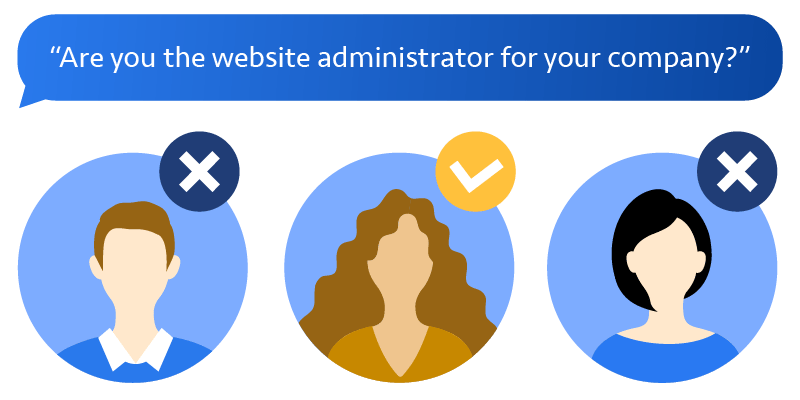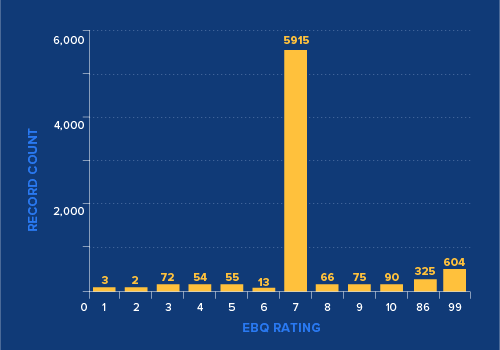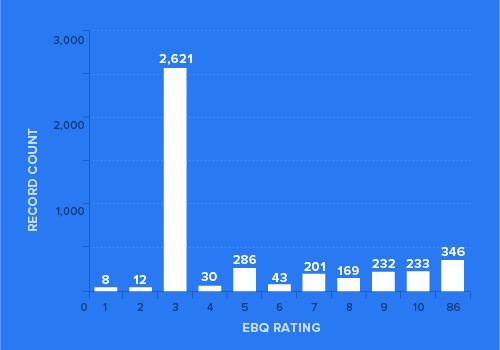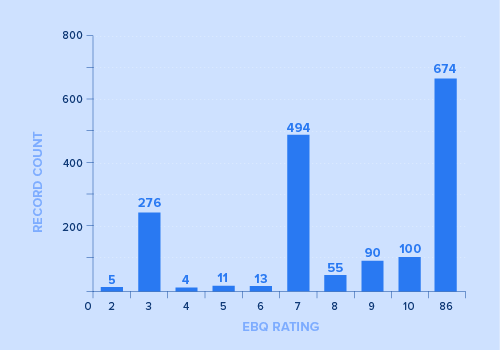Lead Qualification Framework: Criteria, Processes & Tools


Tim Edwards
This post was originally published in September 2018 and has been updated for accuracy and comprehensiveness.
In today’s competitive landscape, many business owners struggle to predict whether a prospect will convert into a sale. Understanding a lead qualification framework will help you categorize and determine whether a prospect will likely purchase your solution. This multi-step process entails asking yourself the right questions, understanding the qualification process, using the right tools, and continuously evaluating the growth of the sales pipeline.
Both your sales and marketing teams will use lead qualification to determine the lead’s needs, how to communicate with them, and their priorities. In the past, the stages of lead qualification were simply labeled cold, warm, or hot. However, modern tools require a more in-depth strategy for sales professionals to secure meetings.
Proper lead qualification will:
- Lower the amount of lost opportunities
- Save your salespeople’s time
- Increase sales and pipeline growth
Continue reading to take a closer look at how to gather and use lead qualification data to grow your company.
The Essential Guide to Sales Pipeline Management
Learn our strategic approach to tracking prospects throughout the pipeline, forecasting revenue, and closing more deals.
What Does it Mean to Qualify a Lead?
Qualifying a lead allows you to decide whether a prospect is a good fit for your product or service. Taking the time to decipher if a prospect is likely to turn into a sale or not will save your team time and money later on. Rather than spending your sales and marketing dollars on a prospect you hope will convert to a sale, have confidence in focusing on a prospect that is more likely to purchase your product based on your lead qualification process.
Typically, there are two factors that will establish if a prospect is a good fit or not. The first is deciding if your product or service will fulfill their needs. Once you have that determined, you will want to decide if they can afford it.
After determining these first two factors, you can proceed to the next, more in-depth questions to qualify your lead.
Lead Qualification Questions to Ask
Asking the right questions will give you insight into the characteristics that reveal if your prospect is ready and willing to purchase. The sales development team determines and nurtures these characteristics with the goal of scheduling a sales meeting if the prospect is a good fit.
As we stated above, using cold, warm, or hot labeling is not enough to gather the information you need because every prospect situation is different. For example, a prospect may know that they want to buy your solution, but they won’t be ready to make the purchase until next year. Including a label for this situation will help you create a plan to reach out again when the prospect is ready.
Your sales development team should be trying to find information about who, what, where, why, and when. In order to move the relationship forward, the sales development team should be able to answer these questions to qualify their prospect for a sales conversation.
Some questions your sales development team can use as a guideline include:
- Is this the right company?
- Am I speaking with the right person?
- Do they have a need for our product or service?
- What is their time frame?
These questions can be used in most situations. However, we suggest using them as a starting point and curating a list of questions that align with your industry.
B2B qualifying questions vs. discovery questions
Although lead qualifying and discovery questions are both essential to moving a prospect forward, it’s important to understand that they have different purposes.
A lead qualifying question is used to qualify the prospect against a specific set of previously determined criteria. An example of a lead qualifying question is, “Are you the website administrator for your company?” We use this information to determine whether we should continue the conversation to the next step and work towards a closed meeting.
A discovery question’s purpose is to further understand the prospect even after they have agreed to schedule a meeting. These questions will help you create the lead summary your sales team can use in future interactions to facilitate a more open dialogue with this prospect. An example of a discovery question may be, “How many endpoints does your company have?” Ask well-thought-out discovery questions to get a firm understanding of the prospect and confidence in moving forward with them.


Subscribe to EBQ's Bimonthly Newsletter

Subscribe to EBQ's Bimonthly Newsletter
Lead Qualification Process
Once you have created your lead qualification criteria that you will compare your prospects with, it’s time to develop a process for qualifying the leads as they come closer to a sale. It’s important to create a process that will stay consistent in documenting a prospect’s level of interest. The rating process you use will determine how ready the prospect is to meet with your sales team; you can think of it as levels at which the prospect moves through.
A traditional lead qualification rating system is one-dimensional, only listing a prospect as cold, warm, or hot. This may cause some confusion in specific situations. Instead, you should create a comprehensive description. This is where the modern lead qualification system will come into play.
A modern lead qualification example
Our lead qualification approach, which we have named the EBQ Rating, goes beyond cold vs. hot labeling. This example accounts for the multi-faceted process of modern lead qualification.
We keep a consistent process for our entire sales team that keeps track of the interest a prospect shows and how close they are to closing a sale.
| EBQ Rating | Label | Description | Next Steps |
|---|---|---|---|
| 0 | Sales Qualified Lead | Researched and vetted decision maker that has set a meeting. | Close, close, close. |
| 1 | Rescheduling | A decision maker who has expressed interest in meeting and who meets the criteria for your offering but the meeting is in reschedule status. | Push for rescheduling a meeting date. |
| 2 | Interested | An interested decision maker who meets the criteria and asked for more information but isn’t ready to arrange a meeting. | Pass along information and warm them up. |
| 3 | Warm Lead, Not Yet Spoken To | Entry Point: Warm leads come from marketing, typically as an MQL, but have not been spoken to. | Discover why they converted and evaluate if they’re a fit. |
| 4 | Point of Contact, Not Yet Spoken To | Your contact passed you to another point of contact in the company to discuss your offering. | Call and mention who referred you, and evaluate if they’re a fit. |
| 5 | Follow up Short Term | A prospect who’s not ready to meet, but could be in 2-12 months. | Use a cadence cycle and apply touches over time. |
| 6 | Follow Up Long Term | A prospect who’s not ready to meet, but could be in a year or more. | Use a cadence cycle and apply touches over time. |
| 7 | Cold Call | Entry Point: A name on a list, no one has called them. You don’t know much else about this contact other than publicly available information. | Call and discover. If they’re not the decision maker, find out who is. |
| 8 | Unsubscribe | A person who has given a verbal or written request to be removed from your database. | Remove this person from your call lists and emails. There are severe legal and financial penalties from ignoring these requests, such as CAN-SPAM. |
| 9 | Referral Contact | A contact who was not the right person to speak with but has passed you to the correct point of contact. | If they could provide you with the right contact, make sure that you mention them when engaging with the new contact. |
| 10 | Unqualified Company | This company doesn’t meet the project criteria. For example, you sell Pardot training, and they use Hubspot. | Don’t delete the company and contact from your database. You need to know not to reach out to them again about that offering. |
| 86 | Bad Contact Information | Bad work phone and email, or they are no longer with company. | Remove the wrong information and put it in the comments for that contact. Comment if they’re no longer with the company. |
| 99 | Relegated Contact |
|
Once a contact has been relegated you can safely leave them alone. |
Pipeline Growth Tools
Now that you understand the process for qualifying leads, we can explore some tools that will make each step easier for your team. Below are some tools we use everyday that have proven to drive efficient pipeline growth.
Sales Cloud CRM
A CRM tool will help you rate and categorize leads based on specific criteria you have set as a single source of truth across your teams. It can be difficult to choose which of the many CRM tools to use. At EBQ, we use Salesforce to handle all of our CRM needs. We start by creating a field in Salesforce for “EBQ Rating” so we can track where the prospect is in the lead qualification process. This allows us to quickly filter and segment the data eventually, we added other custom fields to handle industry-specific information.
When deciding which CRM platform to use, make sure it can work with your pipeline specifically and will help you stage your prospects so you can nurture them effectively.
Marketing automation tools
Marketing automation tools allow us to manage multiple prospects while requiring very little upkeep from us. We use a tool called Marketing Cloud Account Engagement (formerly known as Pardot) for email automation, landing pages, forms, gated content, and more. We have created a separate point system that works in the background to add point values for the different actions people take when using our site. Once they have crossed a certain point threshold, they are converted into a Marketing Qualified Lead (MQL).
We recommend using Marketing Cloud Account Engagement as an automation tool as it deeply integrates with Salesforce and has become one of the most robust tools in the industry. However, if you already use or are planning to use a different platform, we suggest finding one that will easily integrate with Salesforce. This integration will make the process as easy as possible for your team.
If you do end up choosing Marketing Cloud Account Engagement as your platform, our team at EBQ can help implement it into your business and help your sales grow.
The Essential Guide to Sales Pipeline Management
Learn our strategic approach to tracking prospects throughout the pipeline, forecasting revenue, and closing more deals.
Sales Pipeline Healthcheck: Evaluate Your Database
Assessing the health of your database has more to do with understanding how your pipeline is performing than the database itself. Since we have a detailed rating system offering top-level visibility, we can see how well everything works.
The three databases that our lead qualification process segments include:
New database:
As you can see this data has a high amount of entry points labeled by 7 (cold calls). This data is still new and will need to go through the sales cycle process a few more times in order to process the 7s.

Healthy database:
In this set of data, we can see there are many MQLs, which we label as 3s. These are entry points that have shown interest in the company, and we will need a consistent cadence cycle to keep these prospects moving closer to a sale.

Unhealthy database:
This data suggests that there are not many active entries aside from the 3s and 7s. When a prospect is above a 7, it means they are inactive, and the high number of 86s tells us there’s a lot of incorrect contact information. All of this shows that there may be something wrong with the data source.

Use This Framework to Create Your Lead Generation Plan
A modern lead qualification system is essential for your business’s success because it shows you where the prospect is in your sales pipeline and, more importantly, helps you find areas for improvement in your database, messaging, or sales development strategy.
Our EBQ team has extensive experience working with databases and evaluating their health. If you like to dive deeper into your database health or ways to grow your sales pipeline we are always happy to help.

